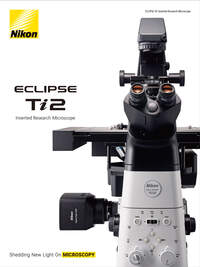- de Change Region
- Global Site
- Home
- Produkte
- Inverse Mikroskope
- ECLIPSE Ti2 Serie
Anwendungsberichte
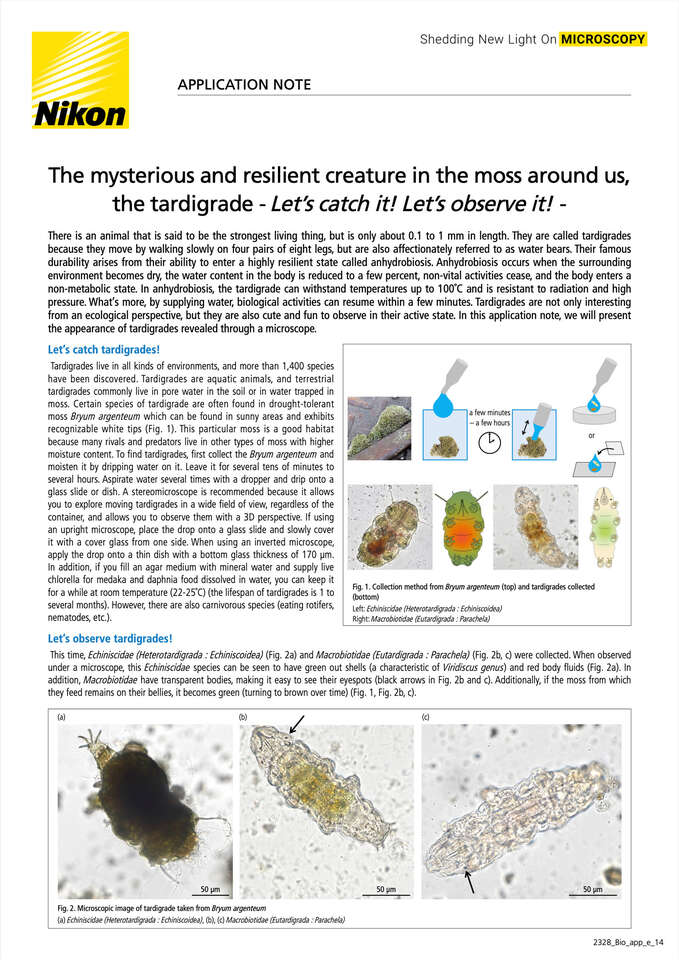
The mysterious and resilient creature in the moss around us, the tardigrade - Let's catch it! Let's observe it! -
Juni 2024
There is an animal that is said to be the strongest living thing, but is only about 0.1 to 1 mm in length. They are called tardigrades because they move by walking slowly on four pairs of eight legs, but are also affectionately referred to as water bears. Their famous durability arises from their ability to enter a highly resilient state called anhydrobiosis. Anhydrobiosis occurs when the surrounding environment becomes dry, the water content in the body is reduced to a few percent, non-vital activities cease, and the body enters a non-metabolic state. In anhydrobiosis, the tardigrade can withstand temperatures up to 100℃ and is resistant to radiation and high pressure. What's more, by supplying water, biological activities can resume within a few minutes. Tardigrades are not only interesting from an ecological perspective, but they are also cute and fun to observe in their active state. In this application note, we will present the appearance of tardigrades revealed through a microscope.
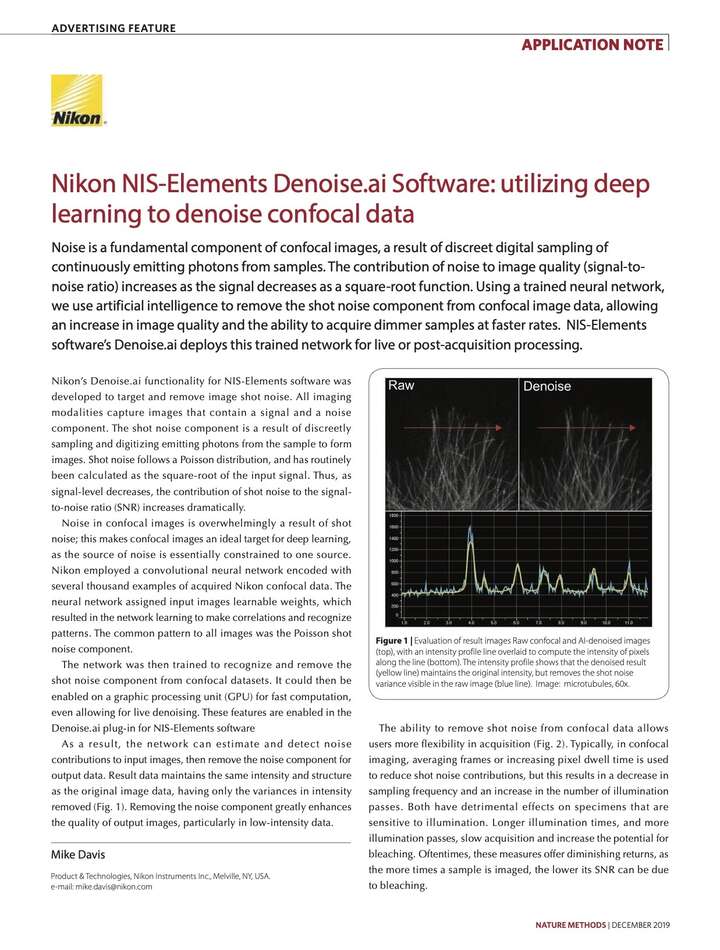
Nikon NIS-Elements Denoise.ai Software: utilizing deep learning to denoise confocal data
Januar 2020
Rauschen ist ein grundsätzlicher Bestandteil konfokaler Bilder. Es resultiert aus dem Vorgang des getakteten Samplings der kontinuierlich emittierten Photonen aus der Probe. Wird das Bildsignal schwächer, erhöht sich der Beitrag des Rauschens auf die Bildqualität (Signal-/Rauschverhältnis) in Abhängigkeit einer Quadratwurzelfunktion. Wir nutzen künstliche Intelligenz, um das sog. Schrotrauschen mit Hilfe trainierter neuronaler Netzwerke aus konfokalen Bildern zu entfernen. Dadurch ist es möglich, qualitativ hochwertige, aussagekräftige Bilder zu gewinnen, obwohl die konfokalen Ausgangsbilder zum einen mit sehr schwachen Signalen und zum anderen noch dazu mit sehr hohen Bildaufnahmegeschwindigkeiten erzeugt wurden. Das Software-Modul software’s Denoise.ai für NIS-Elements setzt dieses trainierte neuronale Netzwerk so ein, dass die Bildverarbeitung entweder während oder nach der Rohbildaufnahme läuft.
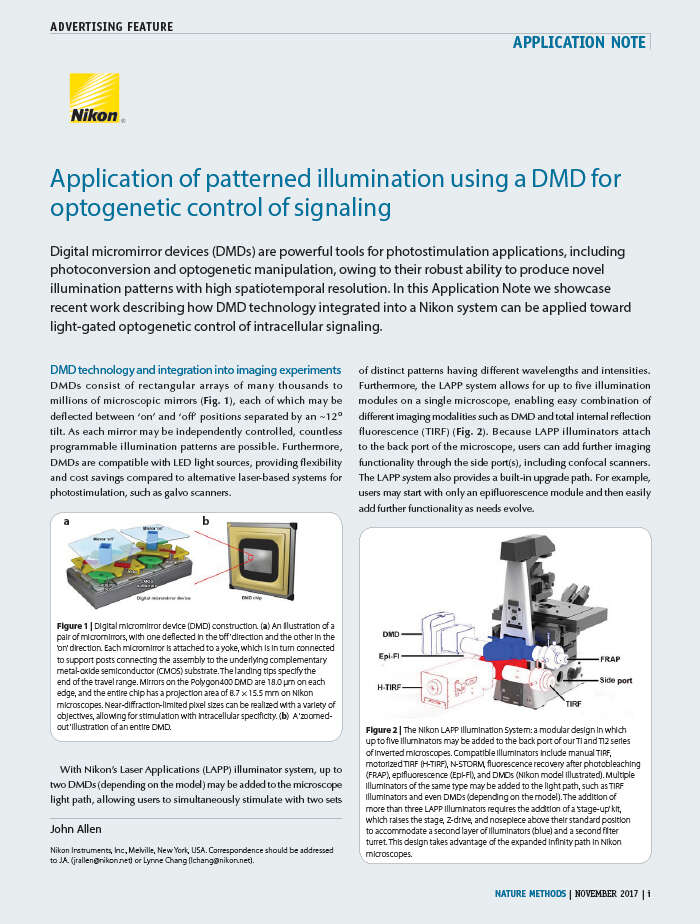
Application of Patterned Illumination Using a DMD for Optogenetic Control of Signaling
November 2017
Digital micromirror devices (DMDs) are powerful tools for photostimulation applications, including photoconversion and optogenetic manipulation, owing to their robust ability to produce novel illumination patterns with high spatiotemporal resolution. In this Application Note we showcase recent work describing how DMD technology integrated into a Nikon system can be applied toward light-gated optogenetic control of intracellular signaling.
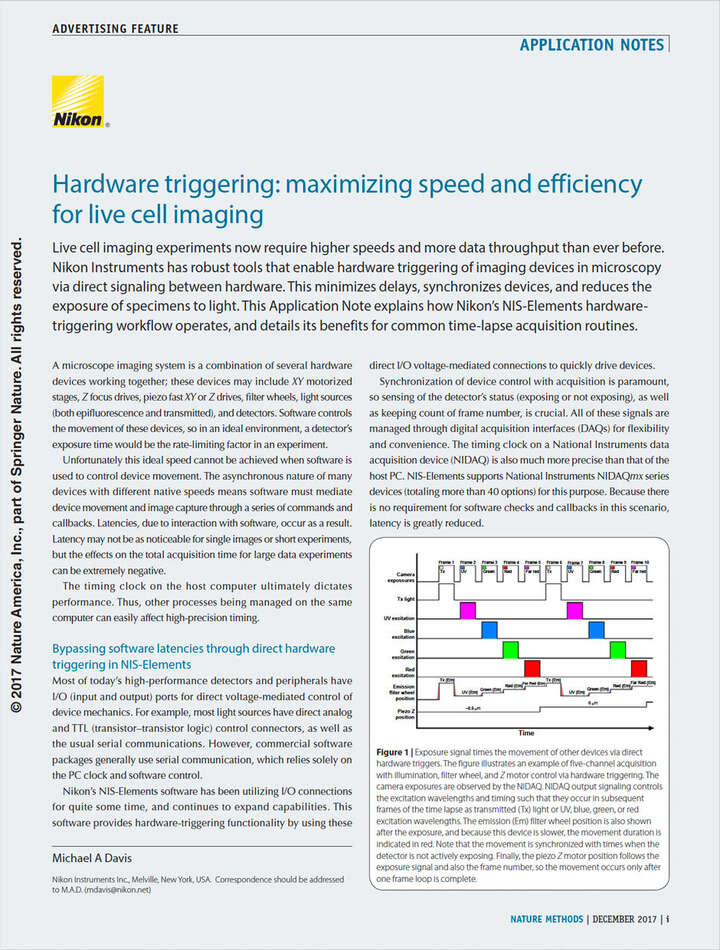
Hardware Triggering: Maximizing Speed and Efficiency for Live Cell Imaging
Dezember 2017
Moderne Live Cell Imaging Experimente erfordern immer weiter erhöhte Geschwindigkeiten und steigenden Datendurchsatz. Nikon Instruments verfügt über robuste Tools für die Hardware-Triggerung seiner Mikroskopkomponenten durch direkte Signalverbindungen zwischen der Hardware. Dies schließt Verzögerungen aus, verhindert die Notwendigkeit für Synchronisationshilfen und führt im Endeffekt zur notwendigen Minimierung der Lichtexposition der Proben. Der Anwendungsbericht erklärt, wie Nikon's NIS-Elements Workflow für die Hardwaretriggerung funktioniert, und erläutert im Detail seine Vorteile für allgemeine Time-Lapse Bildaufnahmeroutinen.
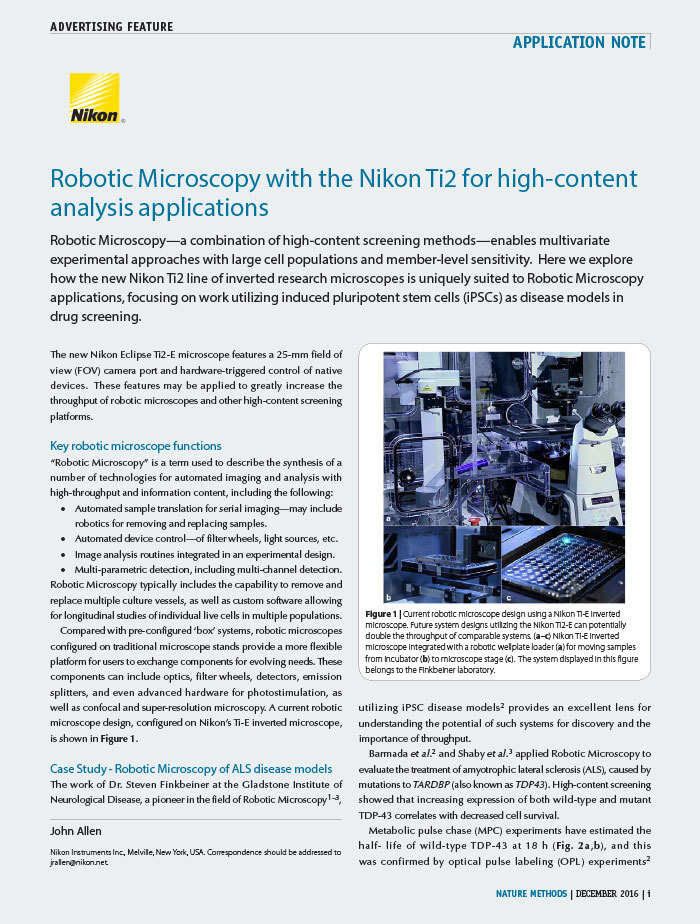
Robotic Microscopy with the Nikon Ti2 for High-Content Analysis Applications
Dezember 2016
Robotic Microscopy—a combination of high-content screening methods—enables multivariate experimental approaches with large cell populations and member-level sensitivity. Here we explore how the new Nikon Ti2 line of inverted research microscopes is uniquely suited to Robotic Microscopy applications, focusing on work utilizing induced pluripotent stem cells (iPSCs) as disease models in drug screening.

